Table of Contents
Majorca is the largest and most well-known of the Balearic Islands, attracting over 13 million visitors per year with its stunning landscapes, sandy beaches and historic sites. However, in recent years these picturesque islands have come under threat from an unexpected source – snakes!
There are now 5 species of snake on the island with three non-native snakes invading and potentially threatening the delicate island ecosystems.
Native Snakes of Majorca
Historically, there were no snakes at all living on the Balearic Islands. The two species now considered “native” arrived long ago as hidden passengers on ships:
Hooded Snake (Macroprotodon cucullatus)
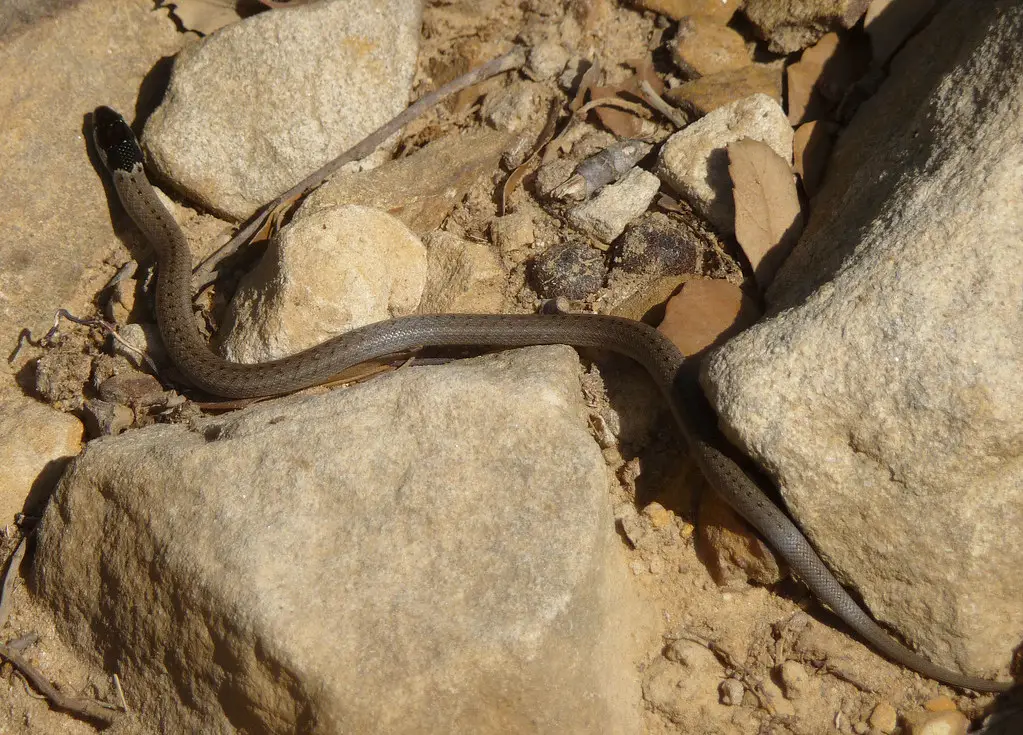
A mildly venomous colubrid species introduced over 1,000 years ago. They are fairly small snakes, growing up to 65cm long, that prey primarily on lizards. As their fangs are positioned far back in their mouth, they rarely inject venom when biting humans.
Viperine Snake (Natrix maura)
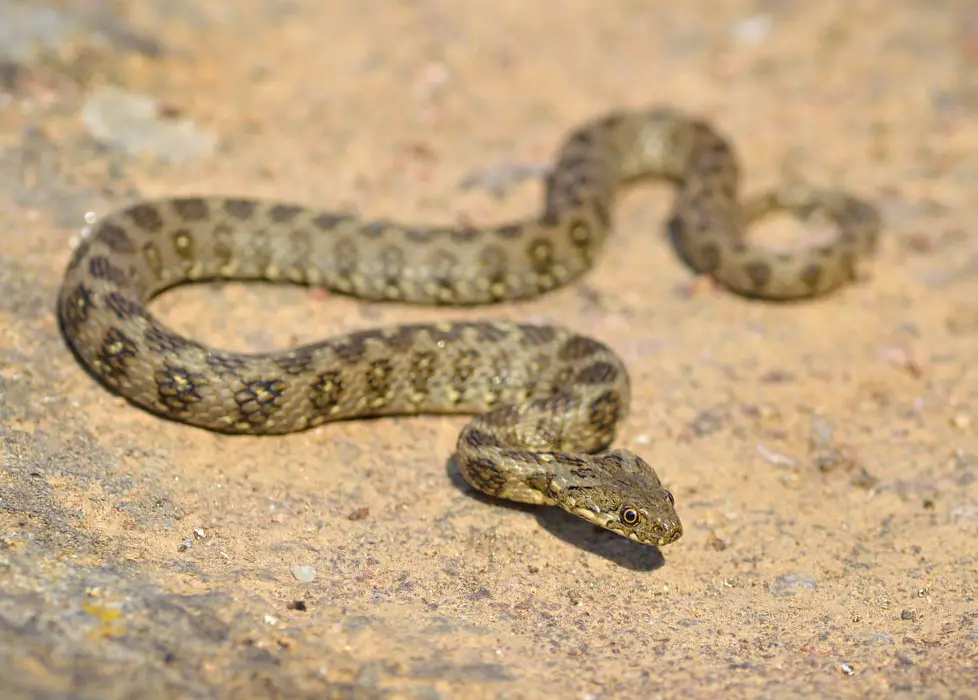
A non-venomous natricine species introduced around 2,000 years ago. These aquatic snakes feed on fish, frogs and aquatic invertebrates. They pose very little risk to humans.
Introduced Snakes of Majorca
Three new snake species have recently begun invading the islands, probably arriving hidden in shipments of plants or cargo:
Horseshoe Whip Snake (Hemorrhois hippocrepis)
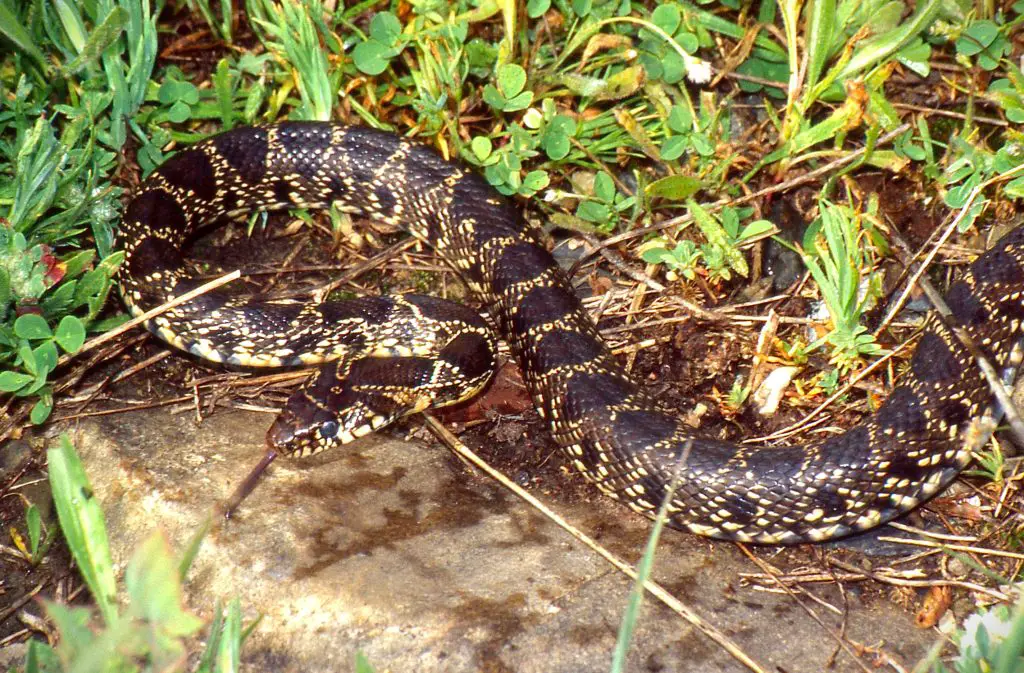
The distinctive Horseshoe Whip Snake typically stretches over 1 metre long and can reach up to 2.2 metres, making it one of Spain’s largest snakes. Named for the unique U or horseshoe shape markings on the back of its head, this snake comes in a diverse range of colour patterns from light grey to yellowish, brown and black.
An agile climber partial to scrublands and rural/suburban areas, the Horseshoe Whip Snake feeds primarily on rodents but also takes small reptiles and birds. Non-venomous and generally not considered dangerous to humans.
However, they may bite if threatened and their bite can result in pain, bruising or slight swelling for a few days. They are strong constrictors, capable of tight gripping coils around captured prey.
Montpellier Snake (Malpolon monspessulanus)
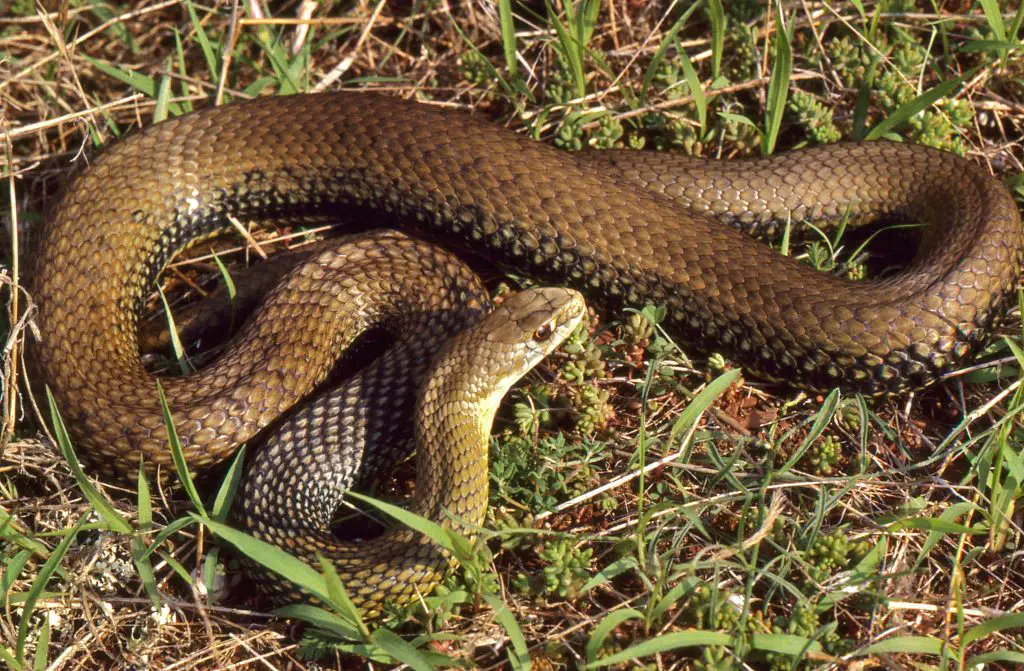
Reaching up to 2 metres long, the slender Montpellier Snake is one of the largest snakes in Spain. Its colouration is extremely variable, ranging from whitish-grey to yellowish with darker blotches along the back.
A nimble climber and active hunter, it feeds primarily on small mammals, birds and eggs. Considered mildly venomous, the Montpellier Snake has rear fangs that secrete a toxin that subdues prey but is not generally dangerous to humans.
However, it can inflict an extremely painful bite if threatened or handled. Secretive and often nocturnal, these snakes inhabit scrublands, abandoned areas, ruins, dry-stone walls and rural gardens. Its proliferating numbers are concerning conservationists in parts of Spain.
Ladder Snake (Rhinechis scalaris)
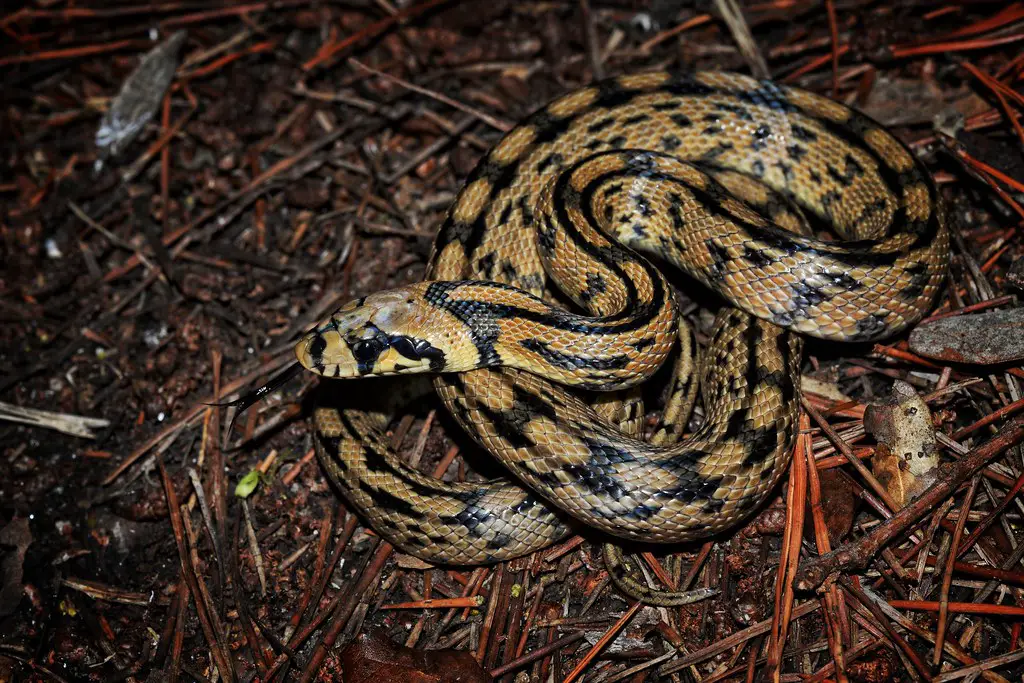
The Ladder Snake, also called the False Smooth Snake, comes in at up to 1.75m long. Named for the ladder-like dorsal pattern running the length of its pale brown or grey body, this slender species is an agile climber found in a variety of habitats.
An opportunistic feeder, it lives on small mammals, birds, eggs, lizards and amphibians. While non-venomous, the Ladder Snake can deliver an extremely painful bite leaving severe bruising if molested.
Normally quite timid, it will flee potential threats. However, this nervous snake can turn aggressive if cornered, lashing out in self-defense. Its increasing presence around human settlements in Spain has conservationists concerned regarding impacts on local wildlife.
Below is a summary of the 5 snake species found in Majorca:
| Species | Average Size | Diet | Danger to Humans | Habitat | Poisonous |
|---|---|---|---|---|---|
| Hooded Snake | Up to 65cm | Lizards | Low – rear fangs rarely inject venom | Dry forests, scrublands | Mildly venomous |
| Viperine Snake | Up to 1m | Fish, frogs, aquatic invertebrates | Very low | Aquatic areas | Non-venomous |
| Horseshoe Whip Snake | Over 1m | Small mammals, birds, eggs | Low – non-venomous, may bite if threatened | Rural areas, scrublands | Non-venomous |
| Montpellier Snake | Up to 2m | Small mammals, birds, eggs | Low – rear fangs rarely inject venom | Rural areas, scrublands | Mildly venomous |
| Ladder Snake | Up to 1.7m | Birds, rodents, lizards | Low – non-venomous, may bite if threatened | Rural areas, abandoned buildings | Non-venomous |
Impact on Native Wildlife
The Balearic Islands are home to a variety of endemic reptiles and birds found nowhere else in the world. Unfortunately, several of these unique species are now under threat from the invading snakes which feed on eggs, chicks and small animals. Most at risk are the endemic Podarcis lizard species and ground-nesting birds like the Balearic shearwater.
On the positive side, the snakes also feed on troublesome introduced rodents which can damage crops and spread disease. However, the overall ecosystem impacts of these new snake species remain concerning to conservation groups.
Risks to Humans and Pets
Bites
While the invading snakes are not highly venomous, they can and will bite if threatened – delivering a painful and bloody, though rarely life-threatening, injury. Bites should always be thoroughly cleaned to avoid infection, and medical attention sought if severe swelling, nausea or other concerning symptoms develop.
Fear and Phobias
For many people, just the sight of a large, unexpected snake can provoke panic, nausea, raised heart rates, sweatiness and other phobic responses related to a fear of the creatures. This can have negative health impacts, especially for those with severe ophidiophobia (a clinical phobia of snakes).
Ecosystem Imbalance
While not presenting immediate obvious risks to human health or safety, the introduction of new predators into delicate island ecosystems can have cascading, unpredictable effects over time. Conservation agencies are very concerned about these possible long-term consequences.
Government and Private Responses
The regional government and various conservation groups have implemented a variety of strategies to try to control the spread of the invading snakes, including:
| Strategy | Methodology |
|---|---|
| Population Monitoring and Reporting | The public is encouraged to report sightings which provide valuable data on the snakes’ distribution and proliferation trends. |
| Trapping and Euthanization | COFIB (Consortium for the Recovery of the Fauna of the Balearic Islands) regularly deploys snake traps then euthanizes captured animals. |
| Shipping Inspection | Ports and cargo entry points are monitored in efforts to detect and intercept snakes being transported to new islands. |
| Public Education | Informing residents and tourists about snake risks and safety, including identification guides for different species. |
Unfortunately, the complete eradication of established exotic species from island habitats has only rarely proven successful historically. The government admits that the total elimination of these snakes from the Balearics is unlikely. The best hope now is to try limiting their further spread across all the islands and minimising their ecosystem impacts.
Protecting Yourself from Snakes on Majorca
If you’re travelling to Majorca on holiday, don’t let the fear of snakes ruin your vacation! While increased sightings have occurred near some residential areas, the likelihood of encountering snakes remains relatively low across most tourist regions.
You can further reduce risks by following these tips:
- Carefully check holiday accommodation, pools, gardens and surrounding vegetation when arriving or exploring new areas. Notify the owners immediately if snakes are spotted so they can address the issue. Consider requesting a room or unit change if snakes have been seen on the property.
- Wear enclosed shoes, long pants and thick socks when hiking in rural areas or exploring historic ruins. Avoid wandering through dense shrubs.
- Supervise small children playing outdoors, especially in gardens or tall grass areas. Don’t allow pets to roam scrublands off-leash.
- If you encounter a snake, move calmly away to a safe distance. Do not attempt to touch or harm the animal. Call emergency services if the snake appears aggressive, refuses to retreat or is located somewhere very problematic.
- Learn to identify native vs introduced snake species, as this can help assess risks and guide response if snakes are sighted near your accommodation. Carry a small digital camera to take photos of unfamiliar snakes to aid identification.
- Consider purchasing travel insurance providing emergency medical evacuation coverage. This offers an extra level of reassurance in the unlikely event of a severe snake bite requiring intensive hospital treatment.
Summary
The Balearic Islands are currently battling invasive snake species accidentally introduced by human activities, with concerning implications for native wildlife as well as potentially introducing new hazards for tourists and residents.
However, the overall risk to human safety remains relatively low for travellers sticking to standard precautions. Don’t let snake invasion news deter you from visiting and experiencing the spectacular landscapes and cultures of Majorca!
Just be snake aware. I’ve lived here for years and only ever seen one snake and that was in a country finca!
FAQ
No, none of the snake species on Majorca are considered highly dangerous or lethal to humans. The two mildly venomous species – the Hooded snake and Montpellier snake – rarely inject venom when they bite.
There are 5 species:
Hooded Snake (native)
Viperine Snake (native)
Horseshoe Whip Snake (invasive)
Montpellier Snake (invasive)
Ladder Snake (invasive)
They likely arrived hidden in shipments of plants or cargo transported from mainland Spain. All 3 invading species are native to regions of mainland Spain.
The main risks are painful bites that can become infected if not treated properly, and phobic reactions in some people. Only very rarely would a snake bite become severely medically problematic.
Wash the wound thoroughly, apply antiseptic, and monitor for signs of infection. Seek medical attention if severe swelling, nausea or other concerning symptoms occur. Let medical staff know it was a snake bite so they can provide proper treatment and monitoring.
In rural areas, forested regions, abandoned buildings/ruins, dense scrublands and sometimes near residential gardens or pools. Their population distribution changes over time.
Members of the public can assist by reporting snake sightings to aid monitoring efforts. Some residents have worked with COFIB to have humane snake traps installed on their properties. Killing or harming the snakes is illegal.
Unfortunately, full eradication is considered very unlikely now that reproductive populations are established across parts of the island. Ongoing management efforts aim to slow or limit their further spread.

Mark Kaye is a travel writer and content creator living in Majorca, Spain. Originally from the UK, Mark moved to the island and quickly fell in love with Majorcan culture, food, and scenic landscapes. When he’s not busy writing detailed guides about Majorca’s top tourist attractions and hidden local gems, you can find him out exploring coastal trails or wandering the streets of Palma’s Old Town in search of his next great restaurant discovery.




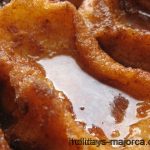
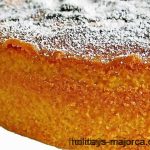



thanks very informative